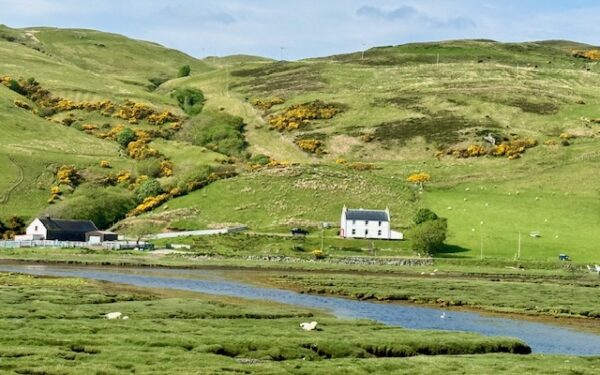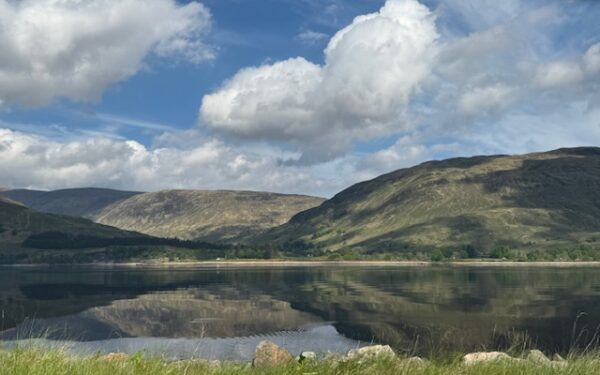“The vision must be followed by the venture. It is not enough to stare up the steps – we must step up the stairs.” Vance Havner
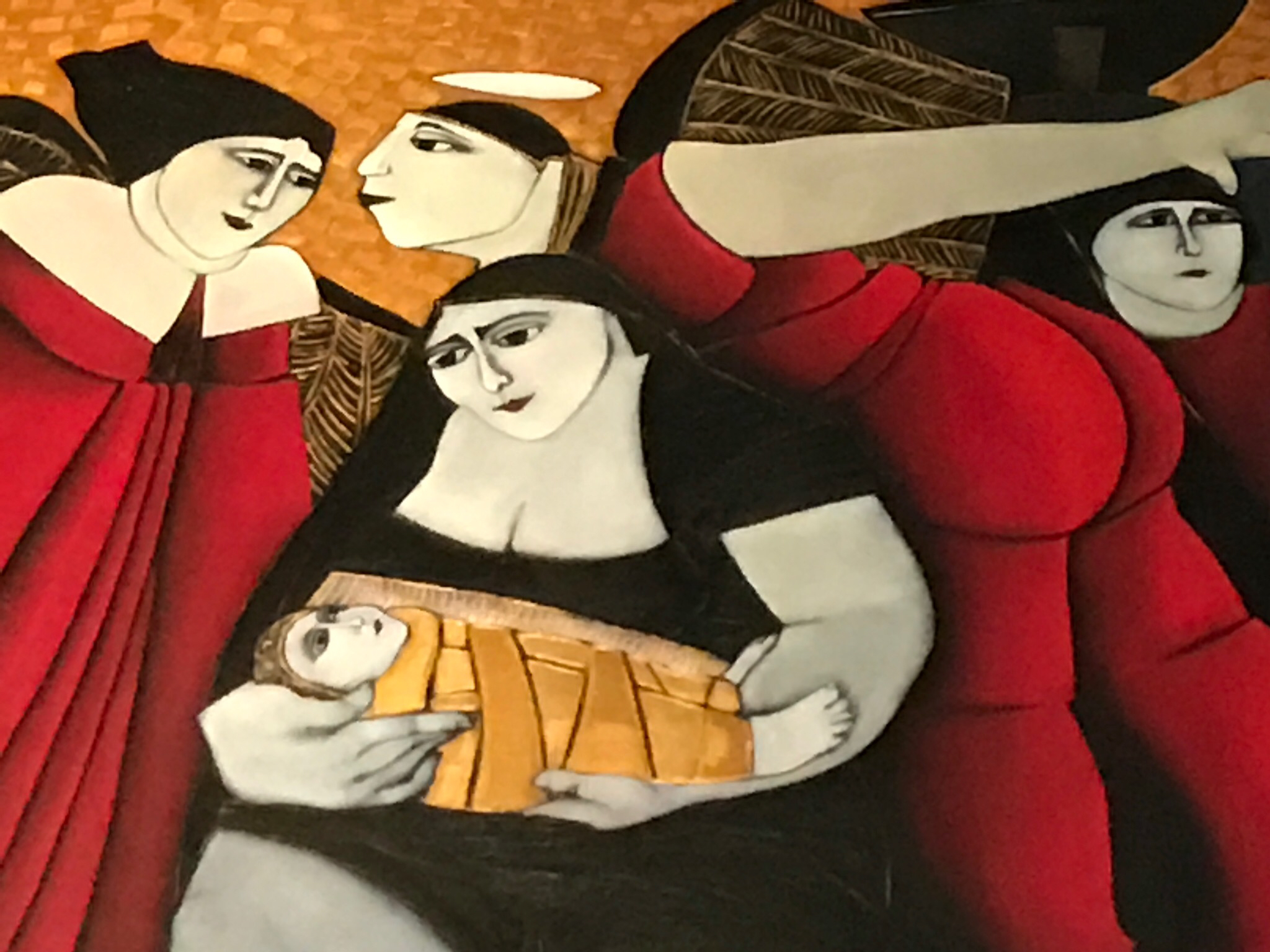
March 23, 2017
Today we woke up to stormy weather, light rain was falling when we took the hotel shuttle to the Cathedral, which was our first stop.
The Porto Cathedral is one of the city’s oldest monuments and one of the most important local Romanesque monuments. Construction started around 1110 and was completed in the 13th century.
The cathedral is flanked by two square towers, each supported with two buttresses and crowned with a cupola. The façade shows a Baroque porch and a beautiful Romanesque rose window under a crenelated arch, giving the impression of a fortified church.
The Gothic cloister, which is decorated with baroque azulejos by Valentim de Almeida (between 1729 and 1731). Depict the life of the Virgin Mary and Ovid’s Metamorphoses. The remains of the Early-Romanesque ambulatory contain a few sarcophagi. The terrace is decorated with tile panels by António Vidal. The coffered ceiling of the chapter house was painted with allegories of moral values by Pachini in 1737.
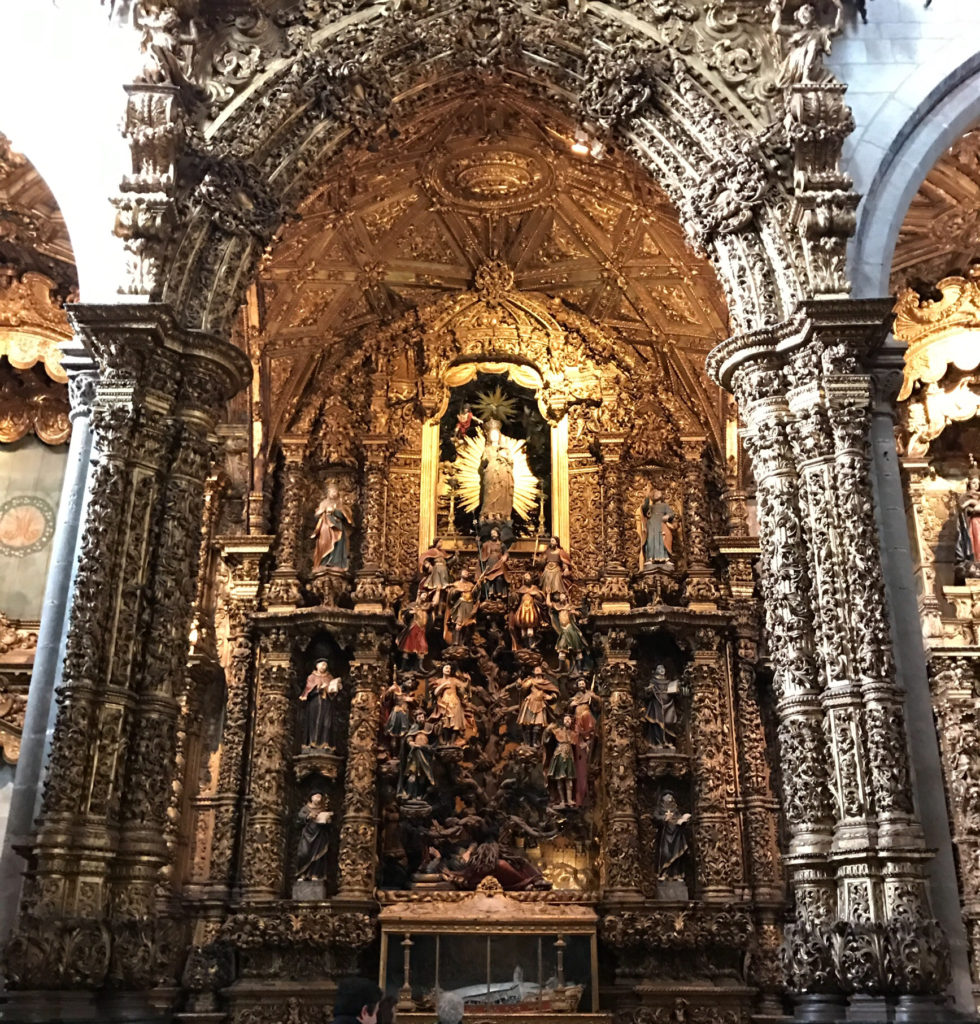
Under a light rain, our next stop. São Bento Railway Station, inaugurated in 1916, this historical station is known for its tile (azulejo) panels that depict scenes of the History of Portugal. The name of the station derives from a Benedictine monastery built on this spot in the 16th century.
The most notable aspect of São Bento Station is the large, magnificent tile panels in the vestibule. The panels depict landscapes, ethnographic scenes as well as historical events like the Battle of Valdevez (1140), the meeting of the knight Egas Moniz and Alfonso VII of León (12th century), the arrival of King John I and Philippa of Lancaster in Porto (1387) and the Conquest of Ceuta (1415).
The station still operates as the main terminus for Porto’s suburban railway lines. While at the station the skies opened up with torrential fury…..what to do?
Buy an umbrella and jump on the Hop-On and Off bus and see the city warm and dry. Some of the places listed below were seen either from the bus or by foot during our afternoon Jewish History tour of the city.
Vila Nova de Gaia, or simply Gaia is located south of the city of Porto on the other side of the Douro River. It is also well known for its cellars (locally known as “caves”) where the world-famous port wine is stored and aged. These cellars have become a major tourist attraction.

Gaia with cellars from all the major producers is a place to taste a variety of Port, another option if you can not visit the Douro Valley.
Livraria Lello, is one of the oldest bookstores in Portugal. It is frequently rated among the top bookstores in the world.
The actual Livraria opened in 1869, the facade is primarily neo-gothic style, with two figures painted on each side representing Art (on the left) and Science (on the right). Some elements of the facade and much of the interior are decorated in Art Nouveau, also with some features of the Gothic Revival. The detailing of the walls on the upper floor is of Art Deco style. Perhaps the most notable architectural feature of the building is the large curving staircase, with detailed wooden balusters. The ceiling is painted plaster, designed to resemble carved wood. It features a stained-glass skylight bearing the Latin phrase Decus in Labore (Dignity in work).
The bookstore was frequented by JK Rowling, author of the Harry Potter series when she taught English in Porto and is reported to be an inspiration for her writing.
The Clérigos Church is a Baroque church. Its tall bell tower, the Torre dos Clérigos, can be seen from various points of the city and is one of its most characteristic symbols.
Construction of the church began in 1732, the monumental tower of the church, located at the back of the building, was built between 1754 and 1763. The baroque decoration here also shows influence from the Roman Baroque, while the whole design was inspired by Tuscan campaniles. The tower is 75.6 meters high, dominating the city. There are 240 steps to be climbed to reach the top of its six floors. This great structure has become the symbol of the city.
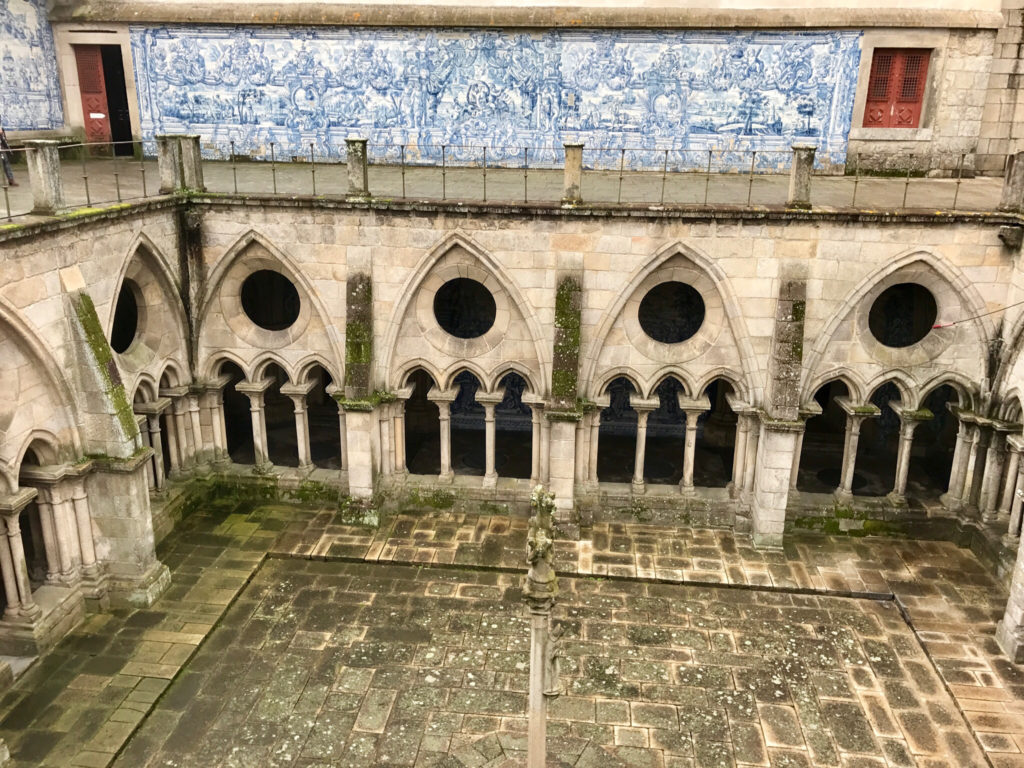
We got off the bus at The Cortes Ingles a 12 story ( 7 above-ground and 5 below)Spanish department store, think of a Bloomingdales where you can literally buy any personal or home item from A to Z. We aimlessly wander through.
Afterward, we met our guide, Ana. We had scheduled a Jewish History Tour of the City. Ana walked us from the cathedral to the river edge and then back to the center of town. Down and up stairways, narrow streets Some so narrow that you could borrow a cup of sugar from your neighbor. Through wider cobblestone streets to grand boulevards. All the time talking about the Jewish history of Porto.
There are not historical synagogues in Porto, but during the restoration of a house in what used to be the Jewish quarter an ark was found built into its wall, due to the location of the sanctuary which is facing Jerusalem, it believed this used to be a synagogue. The building’s current use, a retirement home run by the Catholic Church.
The roots of Portuguese Jewry lay much prior to the forging of the Portuguese kingdom. When Afonso I of Portugal obtained recognition of his independent kingdom, in 1143, Jews had lived in the Iberian Peninsula for at least one millennium. Jews differed from other people since they always considered themselves a nation in exile, whose millennial longing was to return to their land. Nurturing no territorial ambitions wherever they found asylum, Jews solely contributed to the prosperity of their host countries which ensured a good reception.
Nevertheless, there were times when Jews were not welcome. With the Edict of the expulsion of the Jews by Manuel, I (1496) and the official establishment of the Portuguese Inquisition by John III (1536) came a period of intolerance and prejudice that lasted for several centuries and led to the almost complete extermination of Judaism and the Jews in Portugal.
It wasn’t until the twentieth century that organized Jewish communities settled again in Portugal. The Jewish Community of Porto was officially recognized in 1923. The Kadoorie Synagogue “Mekor Haim” (Fountain of Life) is located, the largest synagogue in the Iberian Peninsula and one of the largest in Europe. 1987 President Mário Soares, for the first time in the History of Portugal, asked forgiveness to the Jewish communities of Portuguese origin for Portugal’s responsibility in the Inquisition and all the past persecutions of Jews.
After our tour ended there was enough time to squeeze in more sites depending of whom you ask?
The Igreja de São Francisco is the most prominent Gothic monument in Porto, Portugal, is also noted for its outstanding Baroque inner decoration The Franciscan Order was established in Porto around 1223.
In the early 18th century the lateral aisles and apse chapels were extensively decorated with exuberant gilt woodwork (talha dourada) by several Portuguese woodcarvers. This decorative richness is the most notable feature of the Franciscan church, covering almost completely the roofs of the aisles, pillars, window frames, and chapels and hiding the underlying medieval architecture. Even though the Baroque gilt work does not completely harmonize with the Gothic structure of the church, it is considered one of the most outstanding of Portugal.
Among the altarpieces, particularly important is the one that depicts the “Tree of Jesse” on the North lateral aisle. This polychromed woodwork was carved by Filipe da Silva and António Gomes, as stated in a contract of 1718. It represents a family tree of Jesus with twelve kings of Judah connected through branches of the tree to the recumbent body of Jesse. On the top of the tree is Joseph, under an image of the Virgin and the Child. The niches flanking this tree contain statues of St. Anne and St. Joachim (father and mother of Maria) and four Franciscan doctors who wrote about the Immaculate Conception.
Exhausted we returned to our hotel for a nice dinner. Pousadas have amazing food and wine lists and food costs in Portugal are very reasonable, so we are eating well.
I grew up eating bacalhau fritters, and when my mother used to make them I could never get enough. As we walked through town we stumbled into “Casa Portuguesa do Pastel de Bacalhau” The best find of the day. Their local version of one of my favorite comfort foods is called………..Bolinhos de bacalhau literally a “codfish cake,” made from a mixture of potatoes, bacalhau (codfish), eggs, parsley, onion and stuffed with local cheese and fried to a golden crisp. Their shape resembles a miniature football, crunchy on the outside with a soft body followed by a center oozing melted cheese……how do I describe the taste but Heavenly.
Tomorrow we move to Coimbra as we continue our drive towards Lisbon.




